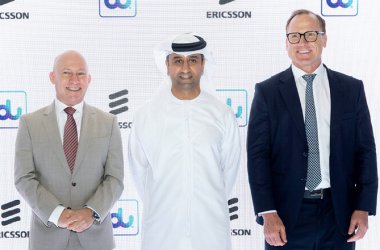du has successfully conducted a trial over its commercial mobile network of the new Massive MIMO (Multiple Input, Multiple Output) solution, a 5G technology that is touted to revolutionise connectivity for users through high capacity speeds. During the field trials, du achieved record breaking cell capacity that exceeded 700Mbps using a single carrier of 20MHz. du is also the first in the region to utilise three simultaneous carriers totaling 60MHz which brings the cell capacity to more than 2.1Gbps.
The tests were conducted on a live commercial du site using real commercial handsets and terminals. The development and utilisation of such a revolutionary technology will enable regular consumers to enjoy vast improvements and consistent superior experiences in internet connectivity, at home or on the go.
Speaking about the benefit of these customer trials, Saleem Al Blooshi, Executive Vice President Infrastructure & Technology, du, said: “As we look to the future, our consumers’ expectations will only increase, as the amount of information exchanged proliferates – and 5G will offer the instant data transfer. We are preparing for this future today by trialling new ways to get the most from our available spectrum and increasing capacity. We have been able to achieve record breaking capacity that will benefit our consumers – irrespective of whether they are indoors or outdoors. MIMO is an antenna technology for wireless communications in which multiple antennas are used at both the source (transmitter) and the destination (receiver). The antennas at each end of the communications circuit are combined to minimise errors and optimise data speed.
Massive MIMO uses large antenna arrays packed onto relatively small physical antenna, thus requiring less space at base stations to serve many terminals simultaneously. The rich and unique propagation signatures of these terminals are exploited with smart processing to achieve superior capacity. This technology provides 3D Beam forming (BF) and multi-layer plus multi-user resource multiplexing to significantly improve system capacity and 3D coverage to consumers. This benefits the users in a number of ways; firstly, throughput is not compromised as the number of users is increased, and the speed is vastly increased for each user, which means that a single LTE site will be able to serve significantly more customers and provide a much more consistent throughput to those customers.
At this year’s Mobile World Congress, the FDD (Frequency Division Duplexing) Massive MIMO and TDD (Time Division Duplex) Massive MIMO dual solution were exhibited. A live demo showed a cell throughput based on 20MHz that reached 670Mbps.





